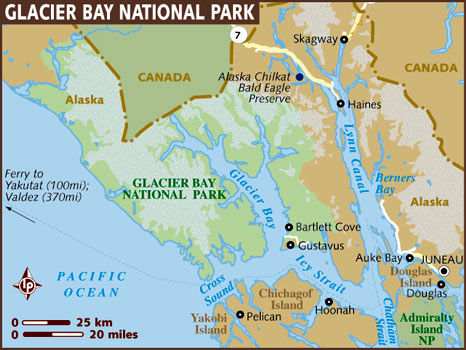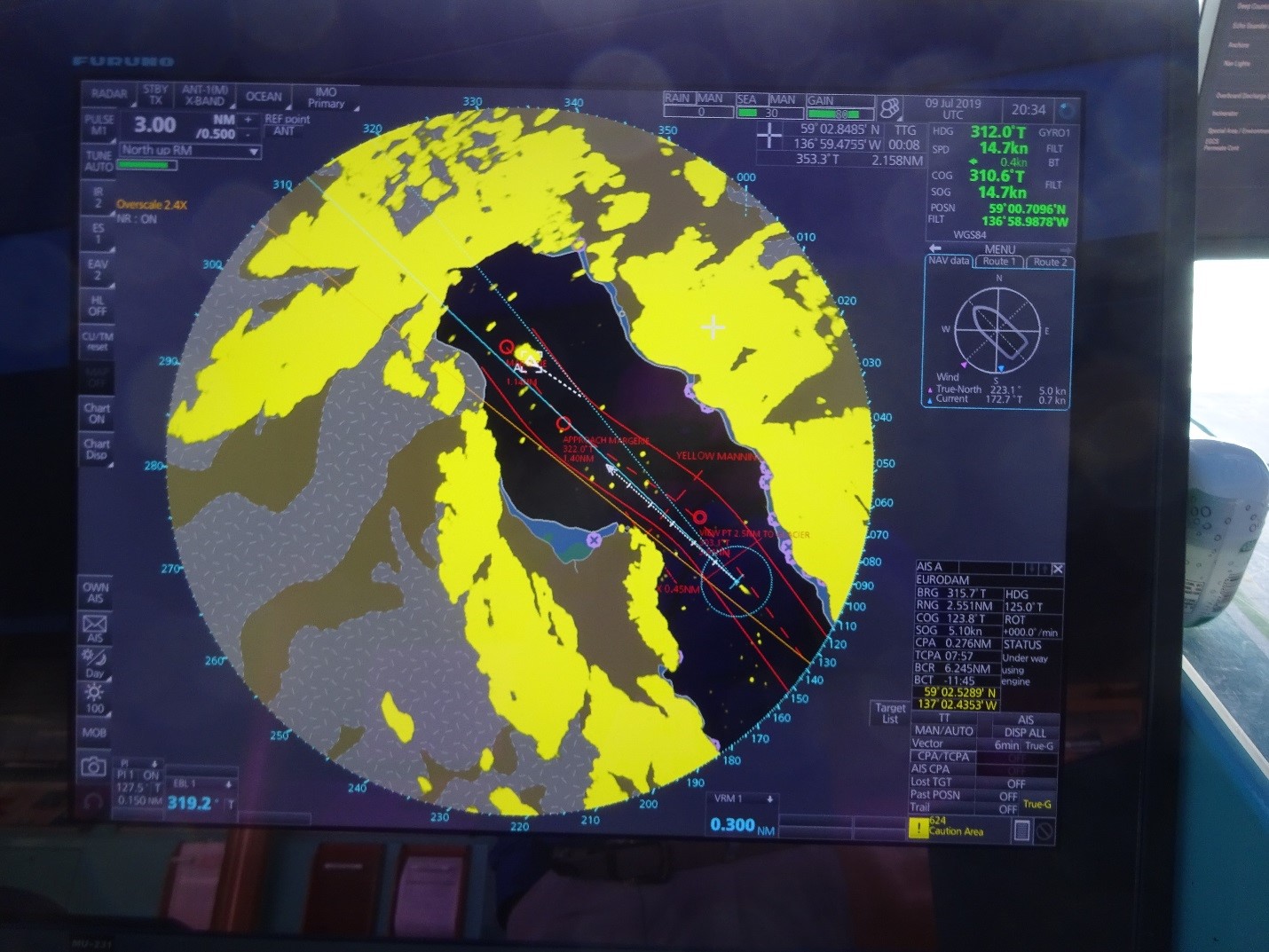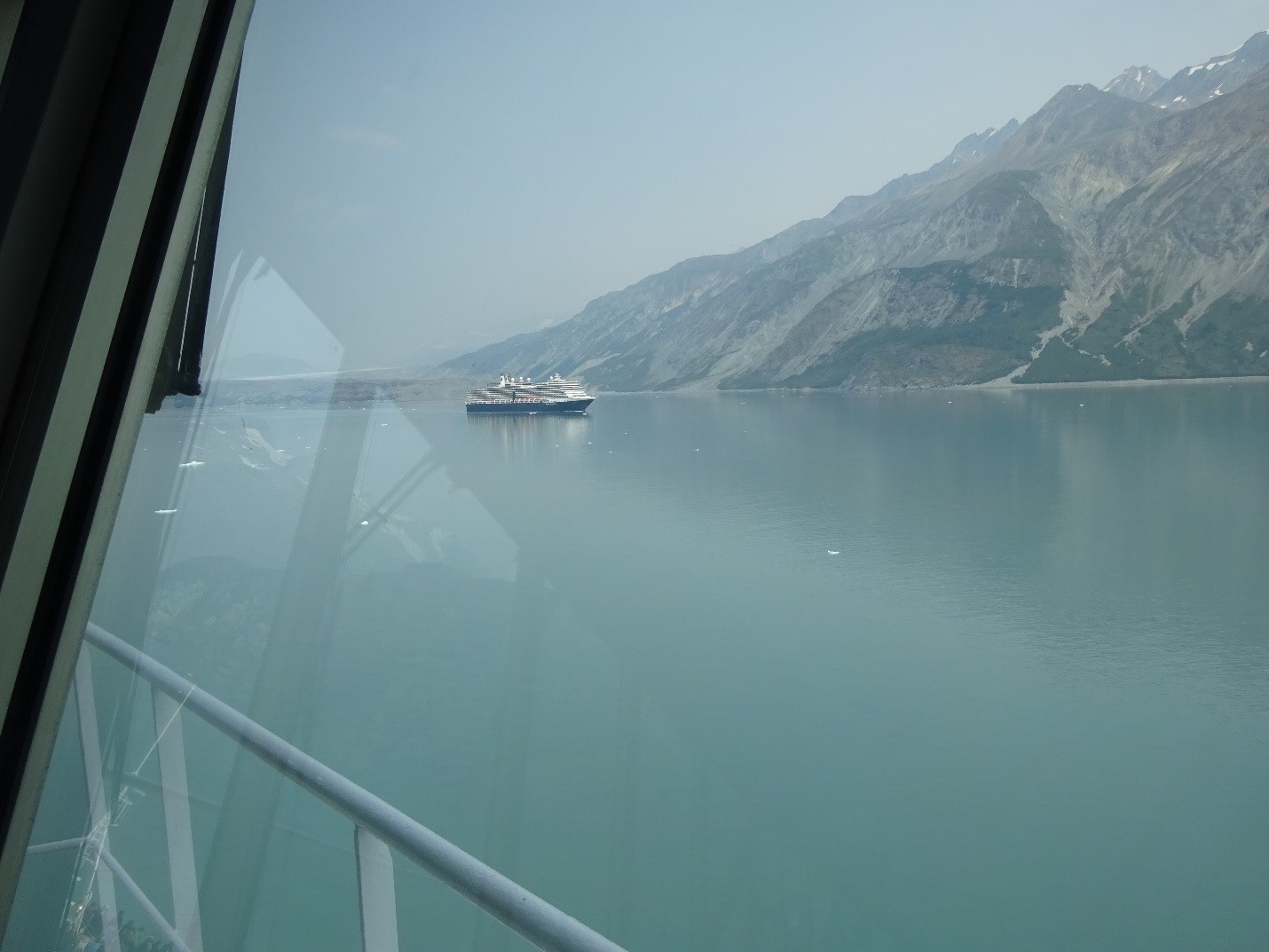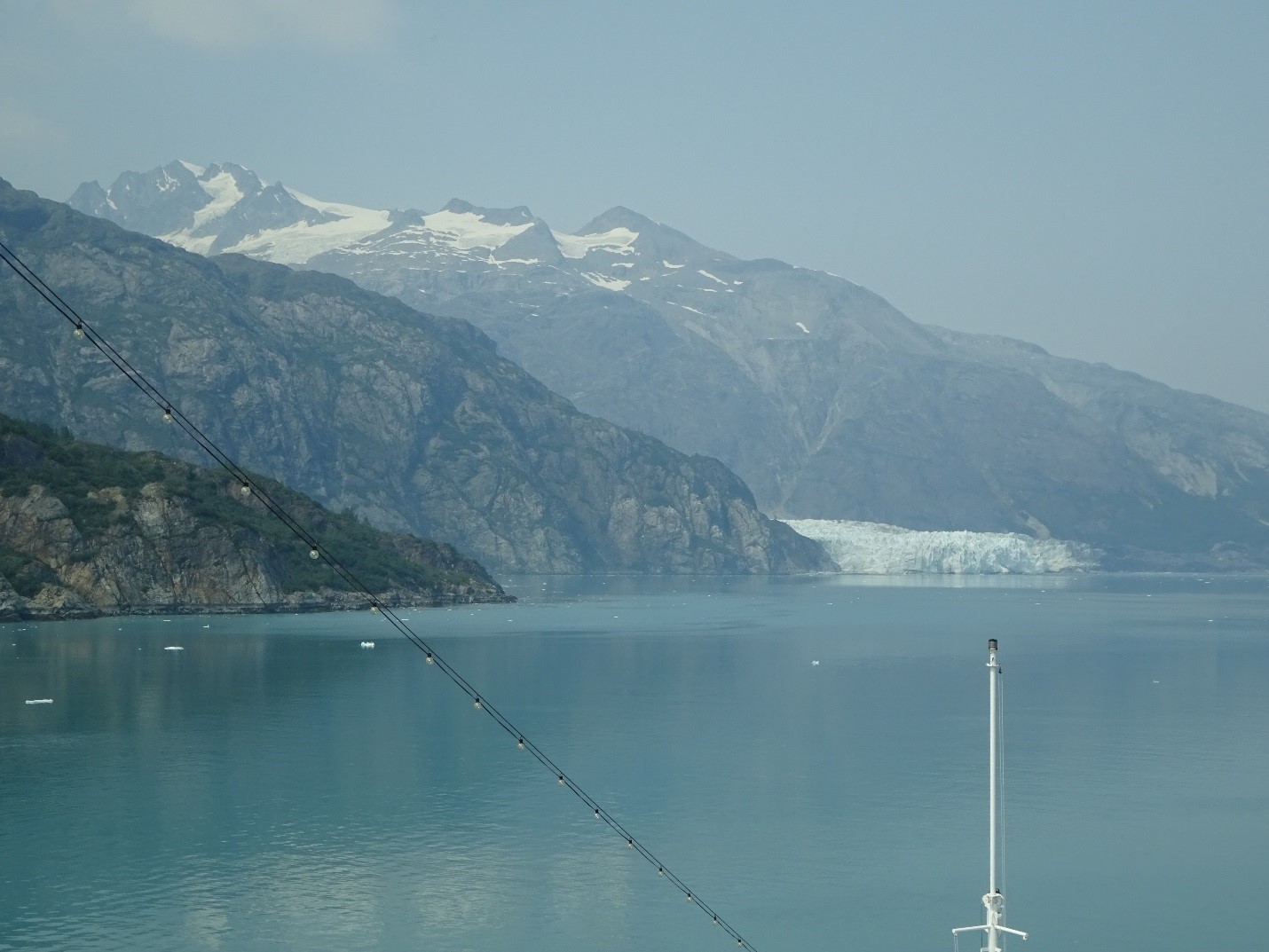With the South East Alaskan pilots on board the ms Westerdam turned into the Inside Passage at 06.30 this morning. The Pilot Station is located at Cape Spencer at the end of the West Indian Passage. And the two pilots will now remain on board until we depart from Ketchikan. One of our pilots is a lady and although that is nothing unusual anymore it was when she started 25 years ago. And I know her since that time as well: 1996. I think at that time she was the first female pilot on the West-coast and certainly in Alaska. Like all of us from those days we are coming closer to our retirement and she will bow out most likely next year. I keep an eye on my number of sailings to Alaska and this is cruise 252 through the Inside passage. I clocked up a lot of those cruises in the 1980’s when Holland America’s fleet was always in Alaska for the summer season and it could happen that your schedule made you are arrive on the first day of the season and had you leave on the last day of the season. And that would then be 20 or 21 Alaska cruises in a row. Now with our large fleet we have officers who have been several years with the company and have never been to Alaska.

Chartlet: Courtesy of Lonely Planet. Please note that Haines is right across from Glacier Bay but there is a mountain ridge in between
For a navigator Alaska is a mixed blessing. While the glorious scenic cruising is something you should feel blessed about it also comes with reduced visibility and pilots. Both we cannot do anything about. The pilots themselves are not a problem; on contrary both the Alaskan Pilots and the British Colombia Pilots are really integrated into our navigation teams but they do the work we would like to do. The Inside Passage is great fun to navigate and a challenge to your skills and then you get a pilot on board who is going to do it for you. And that is not fun at all. But they are compulsory on board and for a reason. If you would suddenly get a 40 foot truck in your back garden, wouldn’t you not like to sit next to the driver to ensure he/she is not charging through your flower beds. So the pilotage laws have been written to ensure safe navigation at all times, as we were sailing in Inside Waters and the Government wants to have a representative on board; and thus they are here. But it means that the navigator goes from active conning = navigating the ship, to process control = checking if the pilot does not make a mistake. Also very important but a lot less fun.
So when the pilot is on board, the bridge team is reformed around the pilot who then navigates the ship in close cooperation with the officer of the watch (OOW). A pilot never has the end responsibility of the navigation but is at the same time required to carry out the requirements under the local pilotage law. And those laws often require that the pilot is directly navigating the ship instead of purely advising the ships bridge team. So the way we do it, is the pilot gives a course change, the OOW repeats (= confirms) it and then the AB Helmsman carries out the course change. When completed, both the pilot and the OOW acknowledges the result and in that way any law that governs the operation is complied with.

The Radar screen showing our approach to Marjorie and Grand Pacific Glacier and the departing Eurodam. The red lines are our safety contours. As long as the ship stays inside these boundary’s we know it is in safe waters.
Going into Glacier Bay we have the Park Rangers on board and today was a real Holland America day as also in the Bay was the ms Eurodam. To avoid being in each other’s way, the ships sail into the bay with several hours in between. Thus the Eurodam was coming away from the Upper Bay while we were going in. The National Park regulations allow for two large cruise ships in the Bay and they are required to have Park Rangers on board. They are on board both for education of the guests as well for ensuring that the ships keep to the rules and do not go sightseeing where it is not allowed.

I still find it hard to comprehend the vast scale of it. So a picture of a large ship, the ms Eurodam puts things a little bit in perspective.
One of those areas is at the moment John Hopkins Inlet which leads to John Hopkins Glacier. This is a favorite spot for seals to raise their pups, safely laying on the ice where no predators can reach them. As John Hopkins is a very active glacier there is a lot of ice floating in the bay and thus also a lot of ice flows for the seals. The Rangers monitor the end of the pupping season and once the seals have left, this bay is then also re-opened for the cruise ships. That is normally around the beginning of September. In my Alaska career I have only made it a few times deep into John Hopkins Inlet as very often the ice remains an obstacle to get close to this glacier. If you are on a cruise and the captain manages to get in, then you are very lucky.

This picture looks a bit hazy and it is not my camera. This is caused by the forest fires in Alaska. The same fires I mentioned when coming down from Anchorage. The Park Ranger mentioned that the ambient temperature in Alaska has gone up 2.5o in the last 25 years or so and that has resulted in the forest fire season now lasting longer and longer. The white Glacier is Marjorie Glacier. In 1982 she was completely white but is now 30% covered in rock debris as she is also retreating.
Right behind the mountain range of the East Boundary of Glacier Bay is our next port of call located, Haines. But there is no gap in the mountains and thus we sail all the way down to the lower bay to Bartlett Cove to say goodbye to our Rangers and then head eastbound in Icy Strait to go around the end of the mountains and back up to the north again into Lynn Canal. We will be docking in Haines around 0600 in the morning and it will be an early day for me as I will start giving the Sr. Cadet a crash course in mooring and unmooring the ship. First from the Forward mooring deck and as soon as he thinks he knows what he is doing we will do the same at the aft mooring deck.
Weather for Haines: Glorious sunshine and near tropical temperatures for this area of 71oF / 22oC. This cruise is shaping up to be a very good one.
Note: For those who are interested, I have now uploaded all my Prinsendam material:
Located on the blog under the drop down box:
https://www.captainalbert.com/holland-line-ships-past-and-present/
All three entries start with the year 2019. Enjoy.

July 10, 2019 at 1:51 am
Welcome back to blogging, Captain. Hopefully, your Lord and Master made it home safely. Thanks for what you do for us readers.
Michael
July 10, 2019 at 2:30 pm
Welcome back! Hope you enjoyed your Cruise
Best wishes from
Robina
July 11, 2019 at 12:31 am
Hallo Robina.
yes I did see my Prinsendam blog.
best regards
July 11, 2019 at 2:38 am
I was very interested in the female pilot you mentioned. Was it Kathy R.? I met her many years ago and had a great time talking with her. I tried to find out some info about her this past spring to see if she was still working from Ketchikan. Could find nothing.
July 12, 2019 at 4:02 am
Thank your reading my blog.
Yest it is indeed Kathy, but she got married a number of years ago and her last name is now Flurry.
Best regards
Capt. Albert